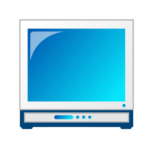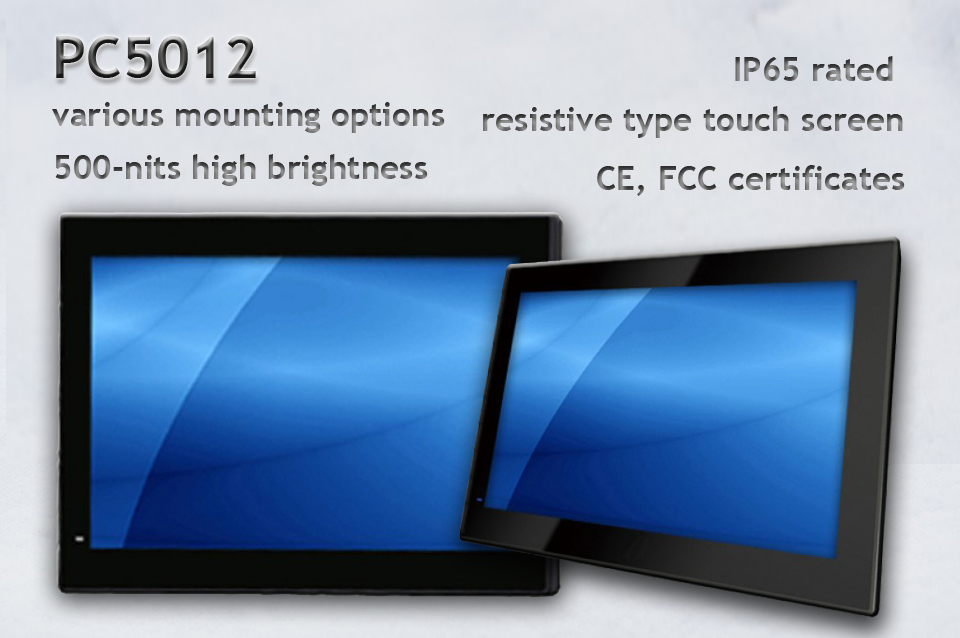Benefits for Combining Control and Operator Interface
Operator interface and controller display provide many benefits to industrial computers and systems. They come in two main features. One is to combine PLC with and operator interface terminal to build a unit designed for basic machines. Another one is to marry a PC-based controller to a full-featured HMI. By making the PC-based controller to an HMI offering control and operator interface for the most complex machines. For these features, people most likely can find in panel PCs.
O/I (Operator Interface)
First of all, O/I, HMI (Human Machine Interface), and MMI (Man Machine Interface) allow an operator to manipulate or command a machine or process. Nowadays, there are more complex manufacturing environments than before. With faster machines, stronger power, higher demands with fewer problems, less downtime with increased efficiency. The operator interface might be a good choice for users to use. In other words, operator interfaces are easy to understand and use.
Furthermore, what exactly is the operator interface? If one has operated an ATM then she/he is already familiar with the form of O/I. However, in the industrial world, O/I ranges from user-friendly simple keypads with text displays to complicated graphical interfaces. By graphical interfaces, meaning one can draw pictures for visualization presentations. Overall, O/I basically represents a graphical interface to a specialized computer. However, an O/I does not offer the rich graphics and flexibility like Windows and Mac-based interfaces. In addition, O/I is typically built into a ruggedized terminal. O/I provides a remote interface through the buttons or switched from the equipment.
Controller-display
People might ask, what is a display controller? When devices generating a video signal, a display controller is the main part of it. In other words, the display controller produces a TV video signal in a video display system. The video display controllers create the timing of the video signals and the blanking period signal. Moreover, display controllers locate in many applications. For example, such as appliances, industrial controls, medical equipment, mobile communication devices, or touch screen monitors.
Types of Display Controllers
Speaking of display controllers, there are several different kinds of display controllers. There are video shifters, CRTC, video interface controllers, and video coprocessors. First, the most simple type of video controllers, video shifters. Next, video shifters are either directly or indirectly responsible for the video timing signals. However, they normally do not access the video RAM directly. By gathering the video data from the main CPU and convert the data into video shifter. Second, video interface controllers need a CRTC embedded in the video controller chip. Moreover, video interface controllers are much complicated compared to other controllers.
Next, CRTC, also known as Cathode Ray Tube Controller, helps to generate and read the video data. Furthermore, a generator based on a CRTC chip has a broad area of capabilities. For example, from text-mode to high-resolution mode which supports lots of colors. On the other hand, video coprocessors offer internal CPU for reading and writing the video RAM. Furthermore, video coprocessors also provide the converting the RAM to the video signal.
I/O
First of all, the term I/O is short for input/output. I/O describes as any program, operation, or device transfers data through the computer device. The output is for every transfer from one device to another device as input. Furthermore, there are also multiple I/O terminals can be built on the communication devices. In addition, I/O units can be easily added to or removed, which provides the easiest way to maintain. When in computer storage, multipath I/O provides an enhanced performance between the CPU in a computer system. By connecting devices and computer systems together for massive storage devices through a controller.
Panel PC
With the power of a modern industrial PC and the convenience of an LCD touch screen. Acnodes' rugged and slim panel PCs provide IP protection, EMI shielding, and other environmental protectants. The all-in-one embedded computer comes with reliable, high-performance solutions for various industries such as the food industry, automation control, HMI, digital system, military, and industry intent of things (IoT) devices.
Panel PCs in Acnodes come with multiple I/O with a Windows-based open platform. Panel PCs provide fanless passive cooling thermal design, ultra-slim LCD touch screen, waterproof front bezel, and rugged enclosure. Furthermore, Acnodes’ panel PCs provide the function and product for HMI interface terminal, intelligent display units, military-grade PCs meets MIL-STD-810G compliance. Moreover, Acnodes offers data acquisition terminal, heavy-duty industrial-grade PC with PCI or PCIe expansion slots capabilities, and ultra-slim all-in-one PC for space-limited applications.
Acnodes Corporation has a wide array of product line configurations. They can customize most commercial and industrial computers to one’s specific needs. For information, please visit www.acnodes.com or contact us at [email protected].
About Acnodes Corporation
Acnodes supplies and markets industrial computers and display solutions for diverse industries ranging from automation to the military. They have an array of technological innovations in the area of rackmount servers, embedded computers, Panel PCs, and rugged monitors that created more simple and valuable products to the customers. Acnodes works closely with their clients to customize computer products to meet required projects and specifications. Acnodes strives to explore new technologies to better improve life and work.






